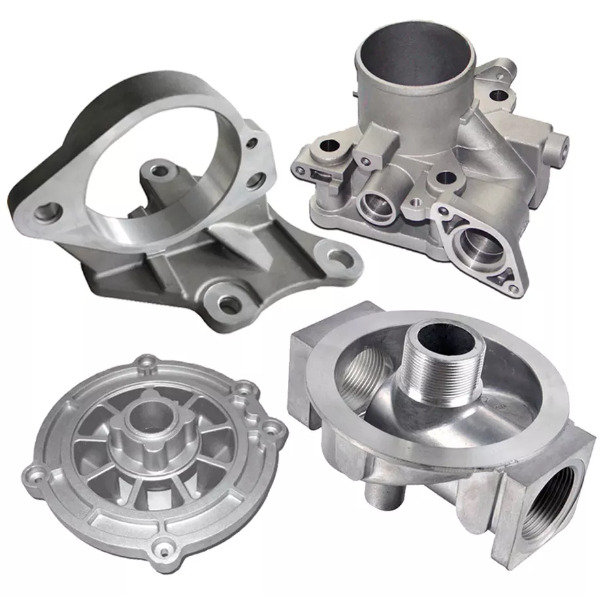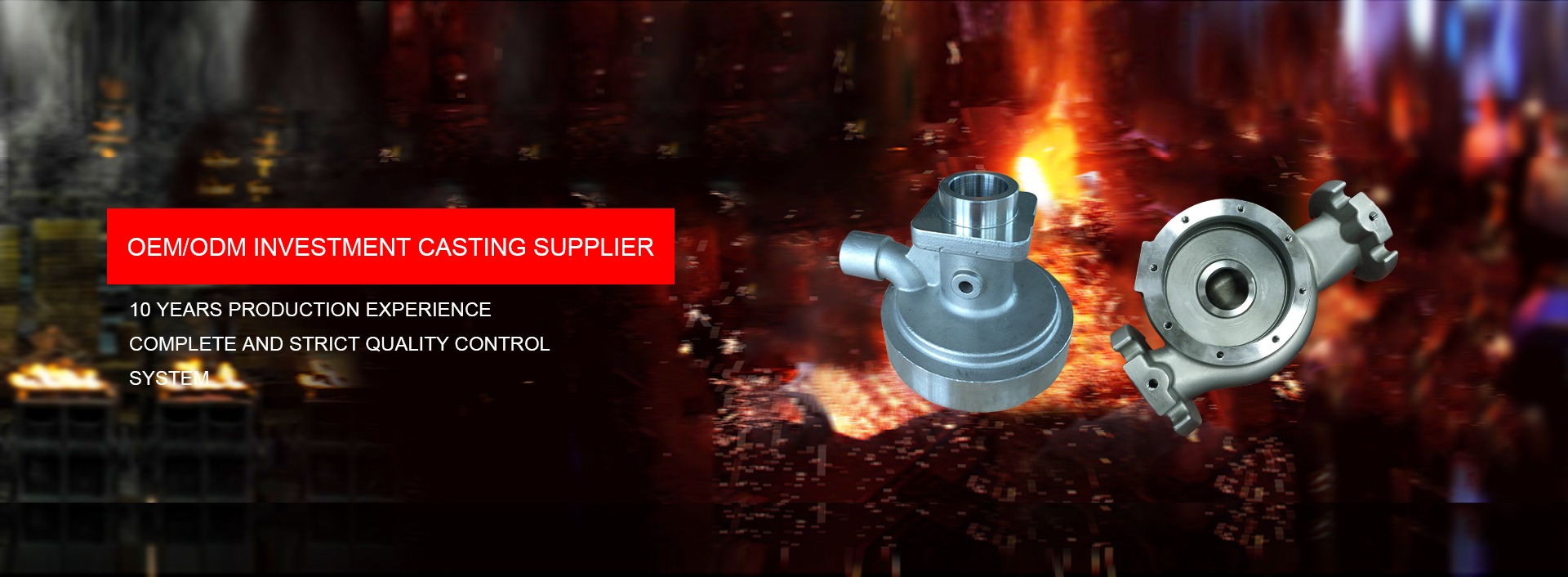OEM investment casting is a manufacturing process that has been around for centuries. It involves creating a mold of the desired part, typically out of wax, and then coating it with a ceramic material. The mold is then heated, causing the wax to melt and flow out of the mold, leaving behind a cavity that is the exact shape of the part. Molten metal is then poured into the cavity, filling it and taking on the shape of the mold.
One of the main advantages of OEM investment casting is its ability to produce parts with complex geometries and intricate details. This is because the mold can be made to any shape or size, allowing for a great deal of design flexibility. Additionally, the process produces parts with a smooth surface finish and tight dimensional tolerances, which can reduce the need for secondary machining operations.
Another benefit of OEM investment casting is its ability to produce parts in a wide range of materials, including steel, aluminum, and titanium. This makes it a popular choice for industries such as aerospace, automotive, and medical, where high-performance materials are often required. Overall, OEM investment casting is a versatile and cost-effective manufacturing process that has stood the test of time.

What is OEM Investment Casting?
OEM Investment Casting refers to a casting process used to produce high-precision parts with complex geometries. The process involves pouring molten metal into a ceramic mold, which is created by using a wax pattern of the desired part. Once the metal has solidified, the mold is broken to reveal the finished part.
Investment casting, also known as precision casting, is widely used in the manufacturing industry to produce parts with tight tolerances and intricate shapes. This process is ideal for producing small to medium-sized parts with complex geometries that are difficult or impossible to produce using other casting methods.
The quality standards for OEM investment casting are high, and the process requires strict quality control measures to ensure that the finished parts meet the required specifications. Quality control measures include testing the metal composition, inspecting the surface finish of the parts, and verifying the dimensions of the finished parts using precision measuring equipment.
The investment casting process is used in a variety of industries, including aerospace, automotive, medical, and defense. The process is particularly well-suited for producing parts that require high strength, corrosion resistance, and heat resistance.
In summary, OEM Investment Casting is a precision casting process used to produce high-quality parts with complex geometries. The process requires strict quality control measures to ensure that the finished parts meet the required specifications. Investment casting is widely used in various industries to produce parts that require high strength, corrosion resistance, and heat resistance.
Advantages of OEM Investment Casting
OEM investment casting is a metal casting process that offers several advantages over other casting processes. This section will explore some of the key advantages of OEM investment casting.
Precision and Accuracy
One of the most significant advantages of OEM investment casting is its ability to produce highly precise and accurate metal parts. This is because the process allows for the creation of complex geometries and intricate details, resulting in net-shape or near-net-shape parts. Additionally, the use of high-quality raw materials and the tight tolerances involved in the process ensure that the final product meets the required specifications.
Versatility in Materials
OEM investment casting can be used to cast a wide range of metals, including alloy steel, carbon steel, stainless steel, aluminum, brass, bronze, and even high-performance alloys like titanium and nickel-based alloys. This versatility in materials makes it an ideal choice for a variety of industries, including mining, medical, hydraulic, and more.
Cost Savings
The investment casting process can also result in cost savings compared to other casting methods. This is because it allows for the creation of complex parts in a single step, reducing the need for additional machining or assembly. Additionally, the process can utilize reusable molds, resulting in lower tooling costs over time.
Surface Finish
OEM investment casting can produce parts with a high-quality surface finish, which makes it an ideal choice for parts that require minimal finishing. The process can also be tailored to produce parts with specific surface finishes, including anodizing, sandblasting, and stuccoing.
Production Process
The production process for OEM investment casting is relatively simple and straightforward, making it an ideal choice for producing intricate parts in large quantities. The process involves creating a wax pattern, coating it in ceramic slurry, and then heating it to remove the wax and harden the ceramic shell. Molten metal is then poured into the shell, and once it solidifies, the shell is broken away to reveal the finished part.
Non-Destructive Testing
OEM investment casting also allows for non-destructive testing to be performed on the finished parts. This testing can help identify any defects or flaws in the parts before they are put into use, ensuring that they meet the required quality standards.
In conclusion, OEM investment casting offers several advantages over other casting processes, including precision and accuracy, versatility in materials, cost savings, surface finish, and non-destructive testing. These advantages make it an ideal choice for a wide range of industries and applications.
Applications of OEM Investment Casting
OEM investment casting has a wide range of applications across various industries, including automotive, aerospace, and hydraulic. This process is preferred by many manufacturers due to its ability to produce complex and intricate parts with high precision and accuracy.
Automotive Industry
In the automotive industry, OEM investment casting is commonly used to manufacture parts such as engine components, transmission parts, and suspension system components. Investment casting allows for the production of lightweight and durable parts that can withstand high temperatures and pressure. This makes it an ideal choice for manufacturing parts for high-performance vehicles.
Aerospace Industry
The aerospace industry relies heavily on OEM investment casting to produce parts for aircraft engines, landing gear, and other critical components. Investment casting is preferred in aerospace due to its ability to produce parts with high strength and durability while maintaining tight tolerances. The process also allows for the production of parts with complex geometries, which is essential for aerospace applications.
Hydraulic Industry
In the hydraulic industry, OEM investment casting is used to produce parts such as pump housings, valve bodies, and hydraulic manifolds. Investment casting allows for the production of parts with high dimensional accuracy and surface finish, which is crucial for ensuring the proper functioning of hydraulic systems. Additionally, investment casting enables the production of parts with intricate internal passages, which is necessary for hydraulic applications.
Overall, OEM investment casting is a versatile manufacturing process that has a wide range of applications across various industries. Its ability to produce complex and intricate parts with high precision and accuracy makes it an ideal choice for manufacturing critical components in automotive, aerospace, and hydraulic industries.
Quality Control in OEM Investment Casting
Quality control is a critical aspect of OEM investment casting, ensuring that the final product meets the required specifications and standards. In OEM investment casting, quality control involves several processes, including inspecting the ceramic shell, die, and non-destructive testing.
One of the essential quality control processes in OEM investment casting is inspecting the ceramic shell. The ceramic shell is responsible for holding the molten metal and creating the final product’s shape. Therefore, it is crucial to ensure that the ceramic shell is free from any defects, such as cracks, holes, or inclusions. Inspecting the ceramic shell involves checking its thickness, surface finish, and overall integrity.
Another important aspect of quality control in OEM investment casting is ensuring that the die used to create the ceramic shell is of the highest quality. The die must be made to the required tolerances to ensure that the ceramic shell is consistent in shape and size. Any deviation from the specified tolerances can result in defects in the final product.
Non-destructive testing is also an essential quality control process in OEM investment casting. Non-destructive testing involves using various techniques, such as X-rays and ultrasound, to inspect the final product for any defects that may not be visible to the naked eye. Non-destructive testing helps to ensure that the final product is free from any internal defects, such as porosity or inclusions.
In conclusion, quality control is a critical aspect of OEM investment casting, ensuring that the final product meets the required specifications and standards. The quality control processes in OEM investment casting involve inspecting the ceramic shell, die, and non-destructive testing to ensure that the final product is free from any defects and meets the required tolerances.
Conclusion
OEM investment casting has proven to be a reliable and cost-effective manufacturing process for a wide range of industries. The process allows for complex and intricate designs to be produced with high accuracy and consistency.
One of the key benefits of OEM investment casting is the ability to produce parts with a high degree of precision. This is achieved through the use of wax patterns, which are created using advanced 3D printing technologies. These patterns are then coated with a ceramic material and heated to create a mold. Molten metal is then poured into the mold, creating a perfect replica of the wax pattern.
Another advantage of OEM investment casting is the ability to produce parts with a wide range of materials. This includes everything from aluminum and stainless steel to exotic alloys such as titanium and Inconel. This flexibility makes OEM investment casting an ideal choice for a wide range of applications, from aerospace and defense to medical and automotive.
Overall, OEM investment casting is a proven manufacturing process that offers a range of benefits to manufacturers across a wide range of industries. With its ability to produce complex and intricate designs with high precision and consistency, OEM investment casting is an ideal choice for anyone looking to produce high-quality parts at a cost-effective price point.

